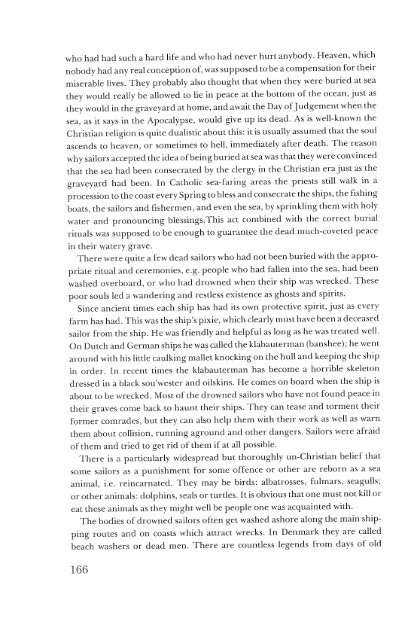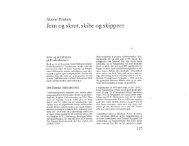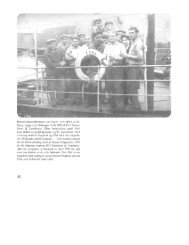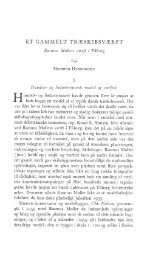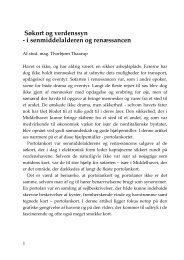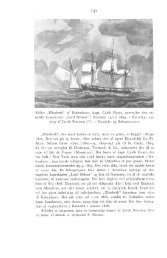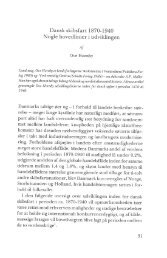Sømandens våde grav, s. 103-167 - Handels- og Søfartsmuseet
Sømandens våde grav, s. 103-167 - Handels- og Søfartsmuseet
Sømandens våde grav, s. 103-167 - Handels- og Søfartsmuseet
You also want an ePaper? Increase the reach of your titles
YUMPU automatically turns print PDFs into web optimized ePapers that Google loves.
who had had such a hard life and who had never hurt anybody. Heaven, which<br />
nobody had any real conception of, was supposed to be a compensation for their<br />
miserable lives. They probably also thought that when they were buried at sea<br />
they would really be allowed to lie in peace at the bottom of the ocean just as<br />
they would in the <strong>grav</strong>eyard at home, and await the Day of Judgement when the<br />
sea, as it says in the Apocalypse, would give up its dead. As is well-known the<br />
Christian religion is quite dualistic about this: it is usually assumed that the soul<br />
ascends to heaven, or sometimes to heil, immediately after death. The reason<br />
why sailors accepted the idea of being buried at sea was that they were convinced<br />
that the sea had been consecrated by the clergy in the Christian era just as the<br />
<strong>grav</strong>eyard had been. In Catholic sea-faring areas the priests still walk m a<br />
procession to the coast every Spring to bless and consecrate the ships, the fishing<br />
boats, the sailors and fishermen, and even the sea, by sprinkling them with holy<br />
water and pronouncing blessings.This aet combined with the correct burial<br />
rituals was supposed to be enough to guarantee the dead much-coveted peace<br />
in their watery <strong>grav</strong>e.<br />
There were quite a few dead sailors who had not been buried with the appro-<br />
priate ritual and ceremonies, e.g. people who had fallen into the sea, had been<br />
washed overboard, or who had drowned when their ship was wrecked. These<br />
poor souls led a wandering and restless existence as ghosts and spirits.<br />
Since ancient times each ship has had its own protective spirit, just as every<br />
farm has had. This was the ship's pixie, which clearly must have been a deceased<br />
sailor from the ship. He was friendly and helpful as long as he was treated well.<br />
On Dutch and German ships he was called the klabauterman (banshee); he went<br />
around with his little caulking mallet knocking on the hull and keeping the ship<br />
in order. In recent times the klabauterman has become a horrible skeleton<br />
dressed in a black sou'wester and oilskins. He comes on board when the ship is<br />
about to be wrecked. Most of the drowned sailors who have not found peace in<br />
their <strong>grav</strong>es come back to haunt their ships. They can tease and torment their<br />
former comrades, but they can also help them with their work as well as warn<br />
them about collision, running aground and other dangers. Sailors were afraid<br />
of them and tried to get rid of them if at all possible.<br />
There is a particularly widespread but thoroughly un-Christian belief that<br />
some sailors as a punishment for some offence or other are reborn as a sea<br />
animal, i.e. reincarnated. They may be birds: albatrosses, fulmars, seagulls;<br />
or other animals: dolphins, seals or turdes. It is obvious that one must not kill or<br />
eat these animals as they might well be people one was acquainted with.<br />
The bodies of drowned sailors often get washed ashore along the main ship<br />
ping routes and on coasts which attrået wrecks. In Denmark they are called<br />
beach washers or dead men. There are countless legends from days of old<br />
166


